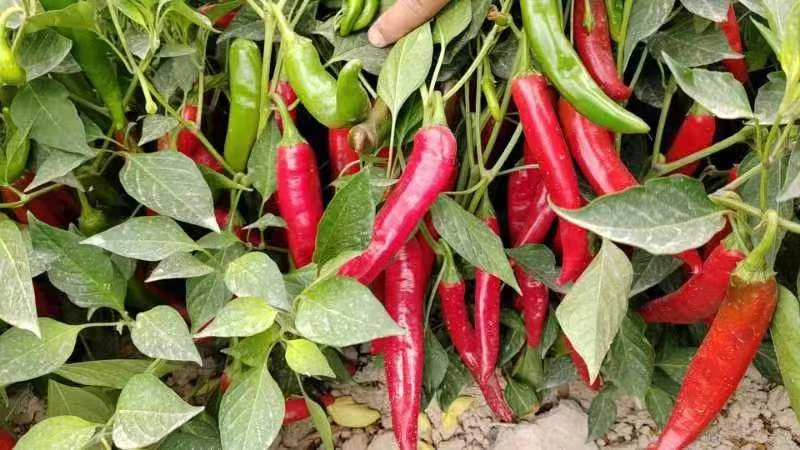- No. 268 Xianghe Street, Economic Development Zone of Xingtai city, Hebei 054001 China
- Byron@hbhongri.cn
chili with dried chiles
The Versatile Charm of Chili with Dried Chiles
Chili, a dish that celebrates the warmth and richness of spices, has become a beloved staple in kitchens worldwide. At its core, chili is a hearty stew that often includes beans, meat, tomatoes, and an array of spices. One of the elements that can elevate chili from ordinary to extraordinary is the use of dried chiles. These dried fruits are not only flavor powerhouses but also offer a depth and complexity that can transform your chili experience.
The Importance of Dried Chiles
Dried chiles come in various shapes and sizes, each with its own unique flavor profile. From the smoky richness of chipotle to the fruity heat of ancho, incorporating dried chiles into your chili allows for a customized culinary experience. Unlike fresh chiles, dried varieties often develop deeper flavors over time, making them ideal for slow-cooked dishes like chili.
When you use dried chiles, you can control your chili's heat and flavor. For those who enjoy a robust, smoky kick, chipotles in adobo sauce can be added, while milder options, such as the guajillo pepper, offer a sweet and tangy note without overwhelming the palate. The spectrum of flavors available through dried chiles is truly one of the wonders of cooking.
Preparing Dried Chiles
Before incorporating dried chiles into your chili, it's best to prepare them to maximize their potential. Start by rinsing the chiles under cold water to remove any dust or impurities. Then, remove the stems and seeds. For a more intense flavor, toast the chiles in a dry skillet over medium heat for just a few minutes until they become fragrant. This process enhances their inherent flavors and prepares them to meld beautifully into the chili.
After toasting, you can either chop the chiles into small pieces or rehydrate them by soaking them in hot water for about 20-30 minutes. Once softened, blend the chiles with a bit of the soaking water to create a rich paste that can be added directly to the chili. This method ensures that the chili achieves a consistent flavor throughout.
chili with dried chiles

Crafting the Perfect Chili
A great chili begins with a solid base. Start by sautéing onions and garlic in a large pot to build flavor. Add in ground meat, typically beef or turkey, cooking it until browned. Then, introduce the rehydrated or toasted dried chiles, allowing their flavors to meld into the mix.
Next, incorporate tomatoes—fresh, canned, or both. This is where you can get creative; adding beans is optional, and you can use kidney, black, or pinto beans, based on your preference. Season the chili with spices like cumin, paprika, and, of course, salt to taste.
Slow cooking is the secret to a perfect chili, as it allows the flavors to develop and intensify. Cover the pot and let it simmer for at least an hour, stirring occasionally. The longer the chili cooks, the more the flavors will deepen.
Serving Suggestions
Chili with dried chiles is a versatile dish that can be served in numerous ways. Whether you prefer it served over rice or in a bowl topped with shredded cheese, chopped onions, or a dollop of sour cream, the possibilities are endless. For an extra kick, consider adding fresh cilantro or a squeeze of lime.
Moreover, chili is an excellent make-ahead meal. In fact, it often tastes better the next day, as the flavors continue to meld. It can be frozen in portions, making it an ideal choice for busy weeknights or gatherings with friends.
In conclusion, elevating your chili with the addition of dried chiles opens up a world of flavors and textures. This simple ingredient can transform your dish from mediocre to magnificent, showcasing the beauty of culinary tradition and innovation. Enjoy experimenting and discovering your perfect chili recipe!
-
Turmeric Rhizome Powder: A Golden Treasure from Roots to TableNewsJul.28,2025
-
The Versatile Application Of Crushed Red Hot Peppers: Lighting Up The Red Flames On The Dining TableNewsJul.28,2025
-
The Paprika: A Touch Of Vibrant Red In Color, Flavor, And CultureNewsJul.28,2025
-
Ground Turmeric: A Modern Examination of an Ancient SpiceNewsJul.28,2025
-
Capsicum Liquid Extract: Features, Applications, and ChallengesNewsJul.28,2025
-
Application of Capsicum Liquid Extract in FoodNewsJul.28,2025







